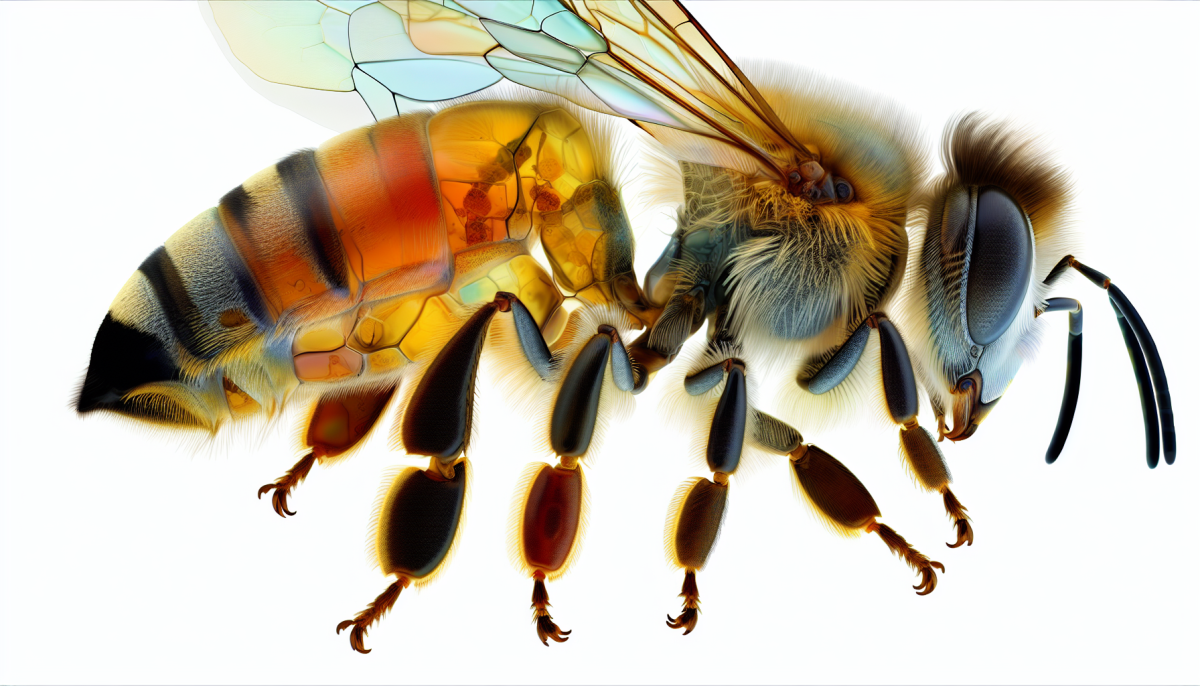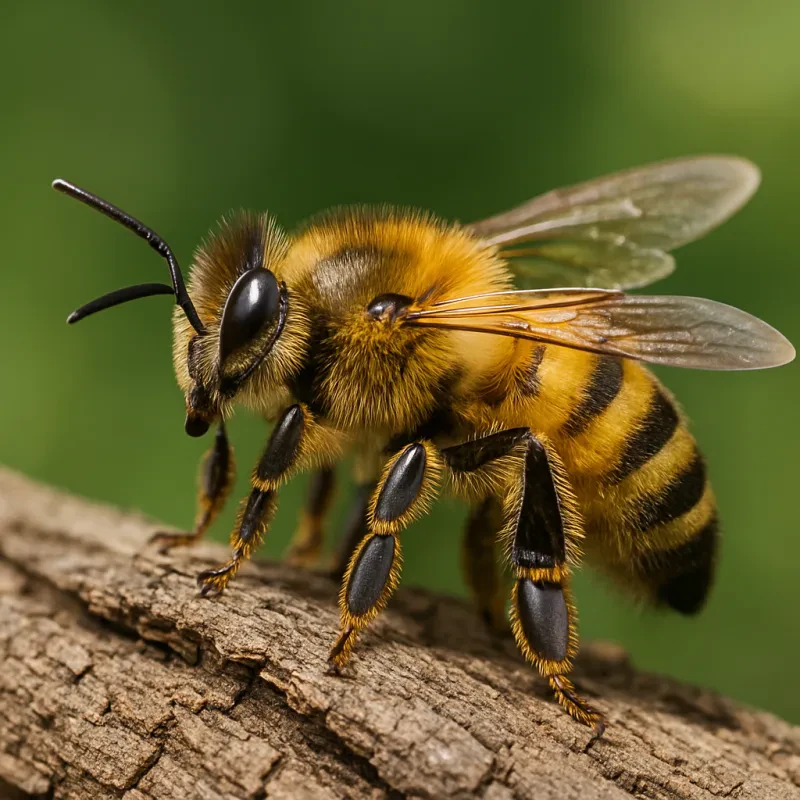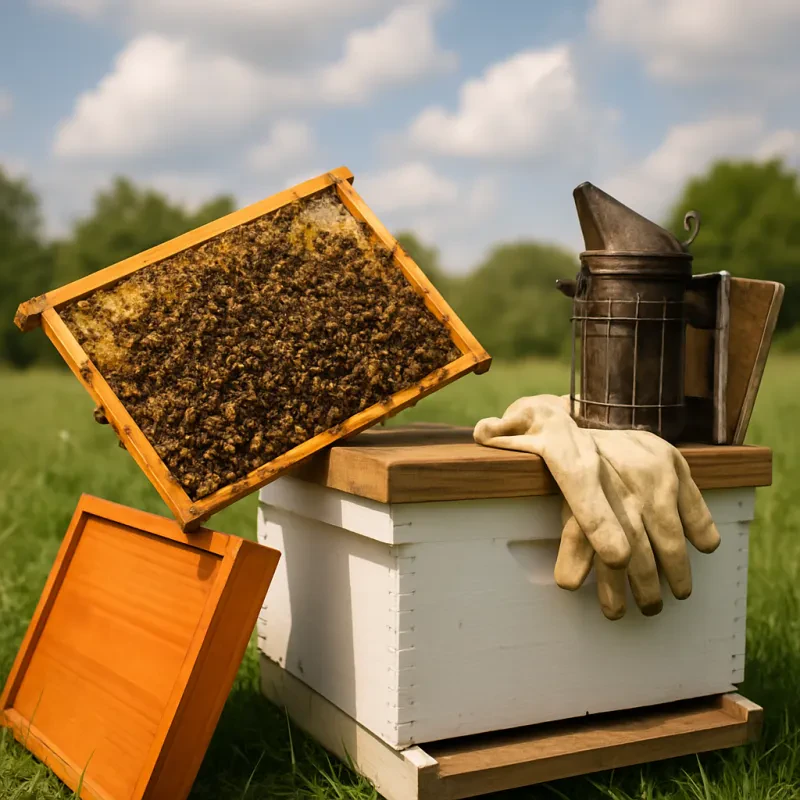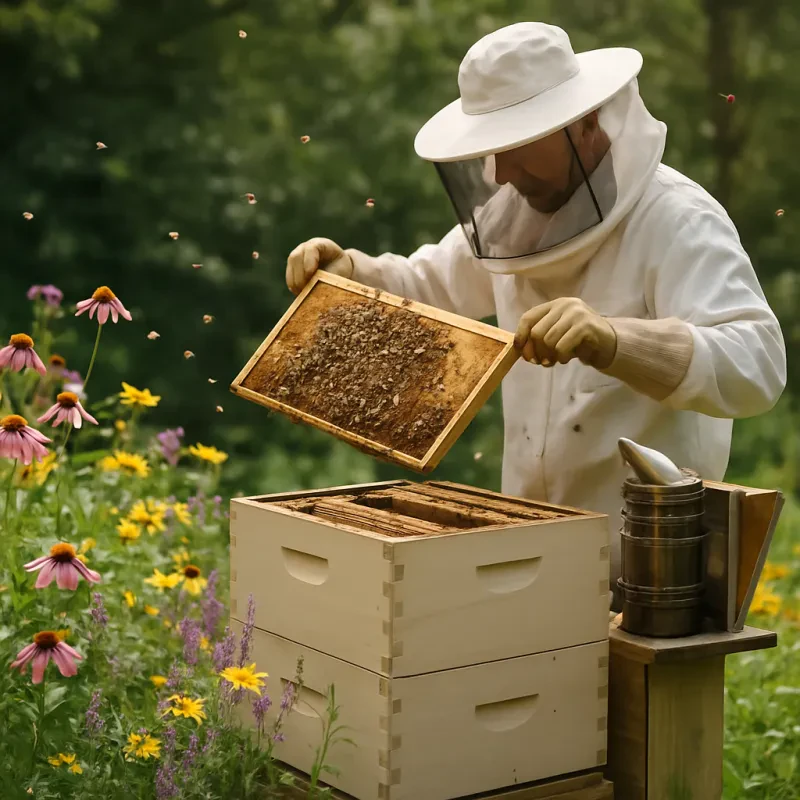$34.99
$26.96
4.29 out of 5 starsNatural Beekeeping: Principles and Practice in Wiser Living
Learn the art of sustainable beekeeping with valuable insights and techniques for eco-conscious living from "Natural Beekeeping: Principles and Practice in Wiser Living
Product information
Product Review Score
Product links
The honeybee, a tiny marvel of nature, is a vital component of our ecosystem, playing a crucial role in pollination and honey production. Behind their delicate appearance lies a complex anatomy that is finely tuned for their unique way of life within the hive and their interactions with the environment. In this article, we delve into the intricate features of the honeybee anatomy, exploring the marvels that make these insects so remarkable.
Exoskeleton of Honeybee: The Protective Shield
At first glance, the honeybee's exoskeleton is immediately noticeable. Composed primarily of chitin, a tough, rigid material, the exoskeleton serves as a protective shield, defending the bee against physical harm and providing structural support. This outer covering is segmented, allowing for flexibility and movement essential for various tasks such as foraging, grooming, and communication.
Head of a Honeybee: Command Center of Sensory Perception
The head of a honeybee is a hub of sensory organs and vital structures. At the forefront are the compound eyes, comprising thousands of individual lenses that provide the bee with a mosaic view of its surroundings, enabling it to detect movement and navigate with precision. Positioned between the compound eyes are three simple eyes, or ocelli, which primarily sense light intensity and help orient the bee in relation to the sun.
Located beneath the compound eyes are the antennae, equipped with sensory receptors that detect odors, humidity, and temperature, allowing the bee to communicate with its fellow colony members and locate food sources. Additionally, the mouthparts, including the proboscis for feeding and the mandibles for manipulating materials, complete the honeybee's head, making it a multifunctional center for survival.
Thorax of Honeybee: Powerhouse of Flight
The thorax of a honeybee houses the muscles responsible for flight, making it a vital powerhouse for their aerial endeavors. Comprising three segments – the prothorax, mesothorax, and metathorax – the thorax accommodates the powerful muscles that control the wings. Each pair of wings, forewings (or front wings) and hindwings (or back wings), is intricately connected to the thoracic muscles through a complex system of hinges and joints, allowing for precise and coordinated flight maneuvers.
Abdomen of Honeybee: Home to Vital Organs
The abdomen of a honeybee is a multifaceted region housing several essential organs crucial for the bee's survival and reproductive functions. One of the most notable features within the abdomen is the honey stomach, a specialized structure where nectar collected from flowers is stored before being transported back to the hive for processing into honey. Adjacent to the honey stomach are the digestive organs responsible for breaking down food into nutrients essential for the bee's metabolism.
Additionally, the abdomen contains the sting apparatus, a modified ovipositor in female worker bees and queens. Equipped with a barbed stinger connected to venom sacs, the sting serves as a defensive weapon, delivering venom to deter threats to the hive. However, for worker bees, stinging is a fatal act, as the barbed stinger becomes lodged in the target, tearing away from the bee's body upon withdrawal and leading to its eventual demise.
Specialized Adaptations: Worker Bees, Drones, and Queens
While all honeybees share a fundamental anatomy, there are distinct differences among the three castes – workers, drones, and queens – each tailored to fulfill specific roles within the colony.
Worker Bees:
Worker bees, the smallest members of the colony, possess adaptations suited for their multifaceted responsibilities. Their bodies are equipped with specialized structures for collecting nectar, pollen, and propolis, as well as constructing and maintaining the hive. Additionally, worker bees exhibit a modified pollen basket, or corbicula, on their hind legs, enabling them to transport pollen back to the hive efficiently.
Drones:
Drones, the male honeybees, have unique anatomical features primarily geared towards reproduction. Their larger eyes aid in locating virgin queens during mating flights, while their stout bodies and lack of specialized structures for pollen collection reflect their sole purpose of mating with a queen.
Queen Honeybee:
Queens, the reproductive powerhouse of the colony, possess distinct anatomical adaptations essential for egg-laying and maintaining the hive's cohesion. Their elongated abdomens accommodate a vast number of ovarioles, specialized structures responsible for egg production. Moreover, queens have a reduced sting apparatus, rendering them unable to sting, but instead equipped with a powerful pheromone-producing gland that regulates colony behavior and cohesion.
In summary, the honeybee's anatomy is a testament to the intricate design and adaptive capabilities of these remarkable insects. From their exoskeletons providing protection to their sensory-rich heads facilitating navigation and communication, every aspect of their anatomy is finely tuned for survival and colony success. Understanding the intricacies of honeybee anatomy not only deepens our appreciation for these vital pollinators but also underscores the importance of preserving their habitats and ensuring their continued prosperity in our ecosystems. As we unravel the mysteries of their anatomy, we unlock a deeper understanding of nature's masterpieces that enrich our world.
$34.99
$26.96
4.29 out of 5 starsNatural Beekeeping: Principles and Practice in Wiser Living
Learn the art of sustainable beekeeping with valuable insights and techniques for eco-conscious living from "Natural Beekeeping: Principles and Practice in Wiser Living
Product information
Product Review Score
Product links




